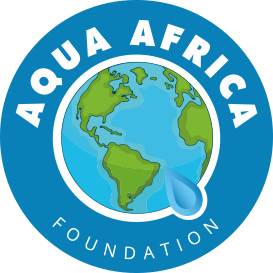More than half of the world’s population faces water scarcity for at least one month each year. At the same time, some people have to make do with too much water, while others can only rely on poor quality water. There are billions of people living in droughts in Africa and India, at risk of flooding in Bangladesh, or lacking clean water due to overuse of fertilizers in the US, Brazil, China, and India.
Climate change is exacerbating global water insecurity by causing more frequent and severe droughts, floods and extreme rainfall, accelerated glacial melt, rapid groundwater depletion, and worsening water quality. These water-related climate change risks negatively impact agriculture, energy production, water infrastructure, and economic productivity, as well as global human health, development, and well-being.
Water is at the heart of discussions about how societies, economies, and governments can adapt to climate change, and the vast majority of existing adaptation strategies are related to water. But researchers know very little about their effectiveness.
As a climate change and sustainable food systems researcher, there was a team that reviewed Climate Change 2022: Impacts, Adaptation and Vulnerability (Part II of the Sixth Intergovernmental Assessment Report of the Panel of Experts) Water Chapter 1,800+ case studies on climate change (AR6). The newly released report is the most comprehensive since 2014 on the impacts of climate change and how well we can adapt.
Water at the center of climate change strategies
The United Nations defines water security as sustainable access to water of sufficient quality to support human well-being, livelihoods, and health without compromising ecosystems. Water insecurity includes a range of problems – too much, too little, too dirty.
Not surprisingly, the vast majority of countries prioritize water for adaptation in their mitigation plans. In our review of more than 1,800 climate change adaptation strategies, we found that more than 80 percent were water-related. Some are in response to floods (droughts, floods, groundwater shortages, glaciers shortages). In other cases, the response itself is water-related (irrigation, rainwater harvesting, and wetland conservation).
However, when looking at the results of these water-based adaptation strategies, only 359 were analyzed for effectiveness, which means we don’t know whether most of these strategies actually reduced climate change impacts and improved health, existence and livelihood.
Adaptation strategies implemented without proper assessment of their effectiveness not only waste scarce resources, but also prevent us from taking more relevant actions that bring greater benefits to affected populations.
Do these strategies work?
Some farmers in Sri Lanka managed to adapt to the 2014 drought by practicing bethma, a traditional technique in which communities temporarily redistribute farmland among farmers, giving everyone equal access to a limited water supply.
Combining local, traditional and indigenous knowledge with a technical understanding of climate change allows for the development and implementation of more acceptable and successful climate change adaptation strategies. This not only ensures an equitable and inclusive adaptation response but also increases the effectiveness of proposed solutions to minimize the impacts of climate change.
Most adaptation measures, especially in the agricultural sector, have been implemented and led by individual households and civil society organizations. Programs at different administrative levels of government – from local to transnational – make up the second-largest portion of adaptation strategies.
With information from: https://theconversation.com/ipcc-report-half-the-world-is-facing-water-scarcity-floods-and-dirty-water-large-investments-are-needed-for-effective-solutions-175578


